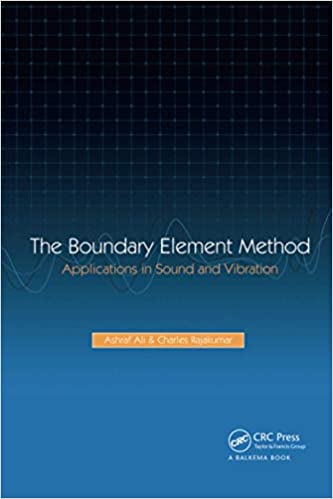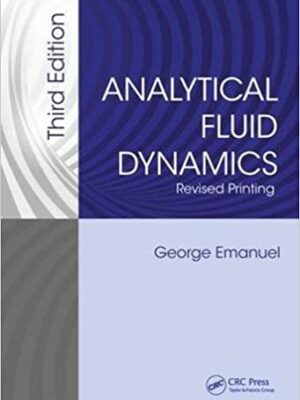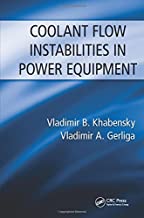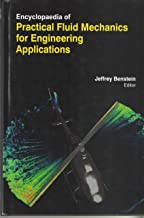The Boundary Element Method: Applications in Sound and Vibration
Original price was: ₹5,922.42.₹4,737.94Current price is: ₹4,737.94.
ISBN: 9780367446550
Author/Editor: Ali and C. Rajakumar
Publisher: CRC Press
Year: 2020
Available on backorder
Description
The Boundary Element Method, or BEM, is a powerful numerical analysis tool with particular advantages over other analytical methods. With research in this area increasing rapidly and more uses for the method appearing, this timely book provides a full chronological review of all techniques that have been proposed so far, covering not only the fundamentals of the BEM but also a wealth of information on related computational analysis techniques and formulations, and their applications in engineering, physics and mathematics. An indispensable handbook and source of inspiration for researchers and professionals in these fields, this book is also an ideal textbook for graduate engineering students.
Additional information
| Weight | 0.85 kg |
|---|
Product Properties
| Year of Publication | 2020 |
|---|---|
| Table of Contents | Introduction 1.1 Why the boundary element method? 1.2 Typical applications of the boundary element method 1.3 Emergence of the boundary element method 1.4 History of boundary element eigenformulations 1.5 Organization of the book 2 Boundary Element Method Fundamentals 2.1 Introduction 2.2 Direct method: weighted residuals 2.3 Examples 2.4 Direct method: Green's integral theorem 2.5 Indirect method 2.6 Body forces 3 Isoparametric Boundary Elements 3.1 Introduction 3.2 Two-dimensional linear boundary elements 3.3 Higher-order elements in 2-D 3.4 Boundary elements in 3-D 3.5 Examples 4 Anisotropy, Axisymmetry and Zoning 4.1 Introduction 4.2 Anisotropic materials 4.3 Axisymmetric problems 4.4 Inhomogeneous regions and zoning 5 Time-Harmonic Analysis in Acoustics and Elasticity 5.1 Introduction 5.2 Acoustics 5.3 Elasticity 6 Dynamic Analysis: Acoustics and Elasticity 6.1 Introduction 6.2 Eigenvalue problem in acoustics 6.3 Eigenvalue problem in elasticity 6.4 Characteristic equation for eigenvalues 7 Basics of Algebraic Eigenvalue Problem Formulation 7.1 Introduction 7.2 Development of BE algebraic eigenvalue problem 7.3 Formulation of Internal Cell Method 7.4 Example of internal cell method: rectangular plate vibration 8 Algebraic Eigenvalue Problem in Boundary Elements 8.1 Introduction 8.2 Eigenproblem using dual reciprocity method in acoustics 8.3 Eigenproblem using particular integral method in elasticity 9 Advanced Concepts in Boundary Element Algebraic Eigenproblem 9.1 Introduction 9.2 Algebraic eigenvalue formulation using fictitious function method 9.3 Example problems using fictitious function method 9.4 Effect of internal collocation points on eigensolutions 9.5 Polynomial-based particular integral method 9.6 Multiple reciprocity method (MRM) 9.7 Series expansion methods (SEM) with matrix augmentation 10 Acoustic Fluid-Structure Interaction Problems 10.1 Introduction 10.2 Boundary element-finite element coupled eigenanalysis of fluid-structure system 10.3 Acoustic eigenproblem for enclosures with dissipative boundaries 10.4 Examples of acoustic eigenproblem with sound absorption 11 Solution Methods of Eigenvalue Problems 11.1 Introduction 11.2 Lanczos-based subspace approach 11.3 Lanczos recursion method 11.4 Example problems 11.5 Summary statements on the non-symmetric Lanczos eigensolver 11.6 Damped system eigenvalue problem solution 11.7 Lanczos two-sided recursion for the quadratic eigenvalue problem 11.8 Summary statements on eigenvalue computation algorithms 12 Discussion and Future Research 12.1 Discussion on boundary element eigenvalue methodologies 12.2 Comparison of eigenanalysis using BEM and FEM 12.3 Topics not covered in the book 12.4 Future research on BEM eigenanalysis |
| Author | Ali and C. Rajakumar |
| ISBN/ISSN | 9780367446550 |
| Binding | Paperback |
| Edition | 1 |
| Publisher | CRC Press |
You must be logged in to post a review.






Reviews
There are no reviews yet.